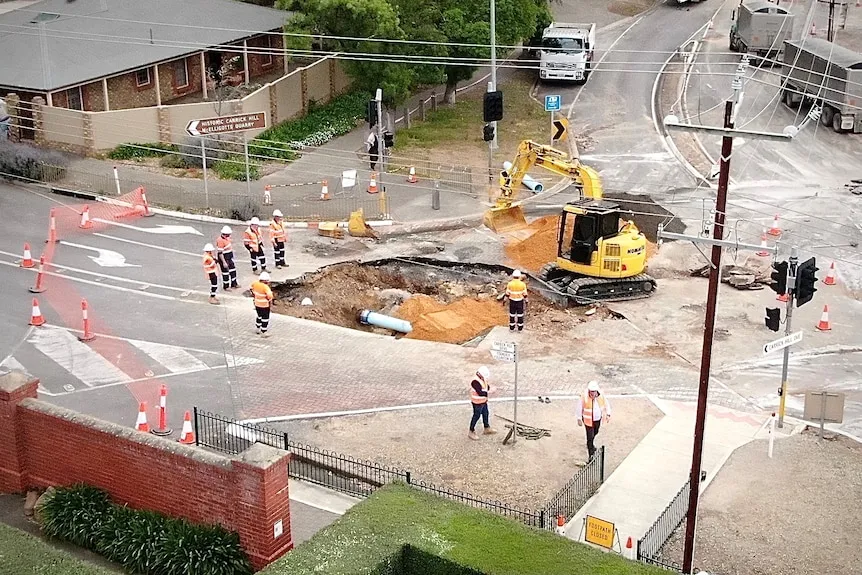Pressure Transients Explained
Pressure transients or ‘water hammers’ are transient events that occur in water pipeline networks as a result of valve opening/closing and pump starting/stopping. Pressure transients can have a severe impact on network performance and efficiency with pipe rupture, throttling, and collapse all occurring as a result of short-term pressure waves through the network. Water utility providers and private companies are seeking urgent solutions to forecast pipeline failure as a means of reducing network disruption and increased operational expenses. Understanding the ‘what’, ‘why’ and ‘how’ of pressure transients means improved maintenance planning and prolonged pipeline performance. Aqua Analytics is a leading smart water network solutions company committed to delivering sustainable pressure transient solutions that mitigate network disruption or failure through advanced network monitoring solutions and insight for network calming.
What is the function of pressure transient monitoring?
Pressure transient monitoring plays an essential role in maintaining the longevity and long-term stability of water networks. In many cases, the magnitude of pressure transients experienced in water supply networks during routine operation is far greater than the tolerances for which the networks were originally engineered. The data collected from monitoring pressure transients is used to inform maintenance schedules which can mitigate costly network leaks, cracks, and ruptures. When it comes to water networks, prevention is always better than a cure. Understanding the operating scenarios that can create transients in the systems mean that water professionals can effectively anticipate pressure control and overpressure protection over a predetermined scope of transient scenarios. Proactive network maintenance plays an indispensable role in reducing long-term operational costs and prolonging network life and performance stability.
Why is monitoring pressure transients necessary?
The demand and stress placed on pipeline systems has evolved rapidly over the preceding decades as networks deviate from expected steady-state operating systems. Traditionally, pipeline systems have been designed with expected steady-state operating conditions with a standard, acceptable deviation factored in to cover emergency situations. Growing demands placed on water supply networks for complex operational tasks have notable impacted wear and degradation on supply networks. In many cases, the demands placed on water networks is far higher than what the networks were originally manufactured to handle and fall outside the scope of expected deviation. The most common incidents that induce pressure transients include valve open/close, pump start/shutdown, and changes in transmission pipeline conditions.
What causes a water hammer?
Water hammer is industry terminology that is used interchangeably with pressure transients to describe short-term network pressures that can cause disturbances to the performance and stability of water networks. Water hammers can occur in any pipeline system (from residential to commercial and industrial) where valves or pumps are used to control the flow of water. A water hammer occurs when a shock wave passes down a pipe due to a sudden change in water flowrate. Transient pipeline network pressures do not inherently cause system damage or failure. A lack of awareness and information during pipe failure prediction means that the magnitude of pressure transients is often discounted or undervalued during pipeline failure prediction testing. Understanding acceptable pressure magnitudes mean that smart water professionals can effectively anticipate sustainable operating tolerances and implement preventative maintenance across network vulnerabilities. The complexity of water networks, operating scenarios, and supply networks mean that it is almost impossible to completely avoid water hammer. The goal of pressure transient testing is to quantify and monitor the possible magnitude of water hammers in order to effectively predict pipeline vulnerabilities. Transient testing is designed to identify the location and magnitude of water hammers in order to implement preventative maintenance that can effectively reduce pipeline disturbances and long-term operational costs across a network.
The role of water network calming in managing pressure transients
Water network calming refers to the actions taken to effectively analyse, monitor, and mitigate water network events that compromise operational efficiency. Water network calming is the process carried out by water professionals – like Aqua Analytics, to pinpoint pressure transients and implement pre-emptive measures that will prevent water main failures. Network calming means using data to understand pressure increases that have caused past pipe failures and disruption to water supply networks. Cultivating a calm water network effectively reduces network pressure and leaks, increases longevity, and can dramatically reduce common asset failures that lead to costly leaks, cracks, and ruptures.
How to avoid damaging pressure transients
Ageing water infrastructure is one of the leading causes of damaging pressure transients in water networks. Accurately estimating water pressure loads (steady and transient) is an important step towards avoiding damaging water hammers and reducing the incidence of pipe failure. Pressure transient monitoring solutions from network efficiency experts like Aqua Analytics are an effective way to understand network load limits and implement preventative solutions that increase efficiency and equipment longevity. Ongoing pressure monitoring and reporting at pre-defined intervals makes it possible to create accurate pressure transient readings. Traditional pressure monitoring technologies do not provide the same accuracy and – in many cases – can result in transient events being missed or inaccurately reported. Partnering with a network efficiency company that has access to advanced transient monitoring tools is the only way to accurately measure and report transient network behaviour.

